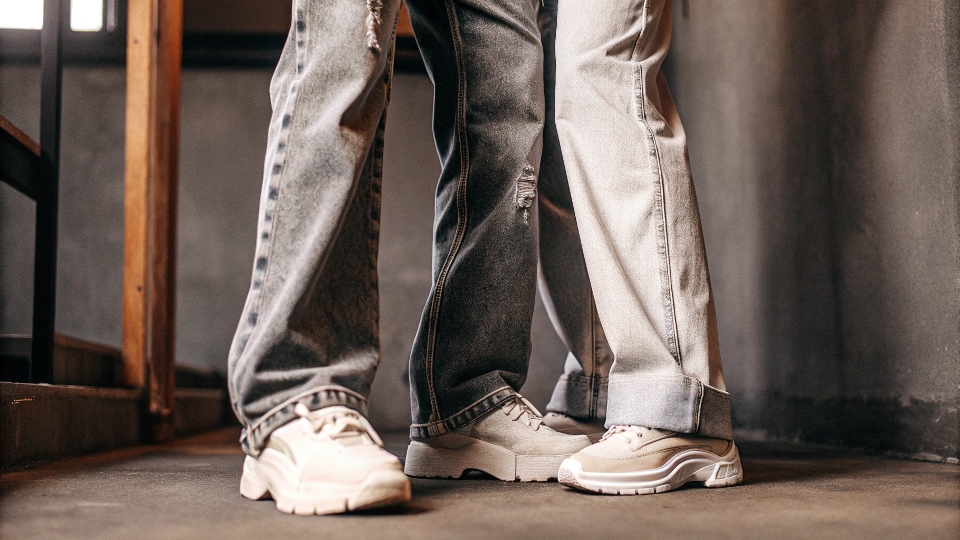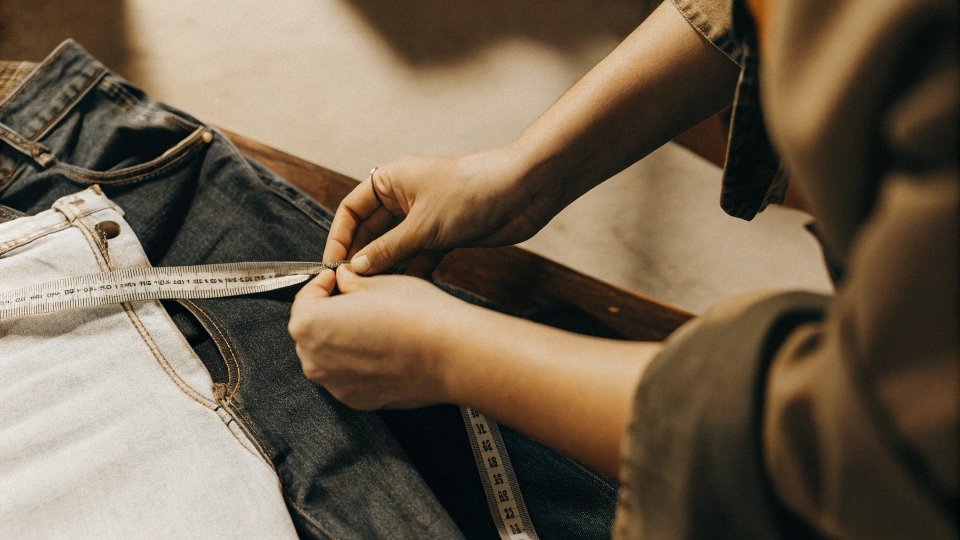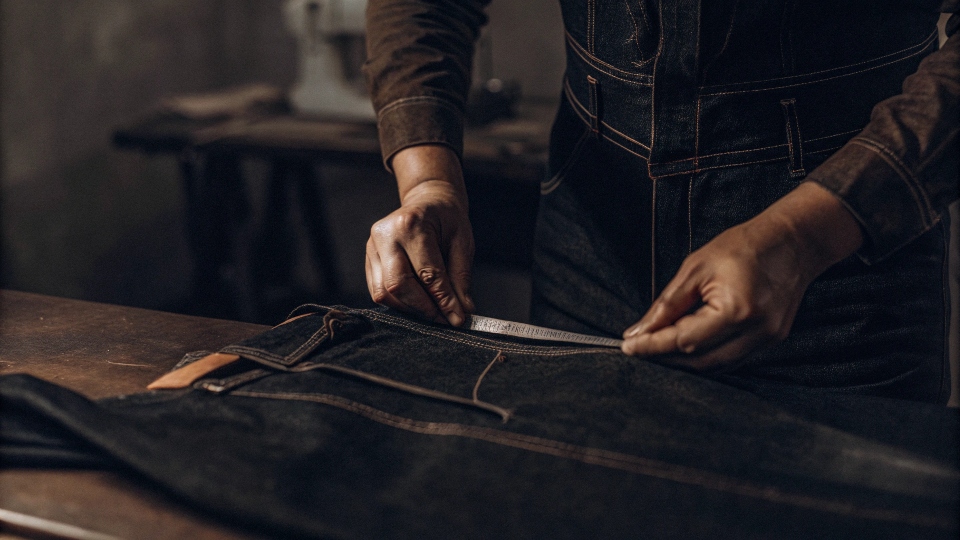You buy a new pair of jeans, and they feel perfect—until you stand up and the hems are dragging on the floor. It’s frustrating to have to spend more money just to make them wearable.
Yes, many jean makers are intentionally producing longer jeans1. This is driven by current fashion trends like stacked and wide-leg styles, and the economic need to produce a single, one-size-fits-most inseam that taller customers can wear and shorter customers can have altered.
In my 20 years of running a denim factory, I've seen inseam lengths change with the trends. Right now, longer is definitely in. But it's also a practical decision for mass-market brands.
It's cheaper to produce one longer length and assume people will tailor them than to produce multiple inseam options for every single waist size. It creates a problem for many, but there are good reasons for it and easy ways to solve it. Let’s explore why this is happening.
Are jeans supposed to be too long?
You see stylish people wearing jeans that bunch up at the ankle or sweep the floor. You wonder if this is a deliberate look or just a case of ill-fitting pants.
Sometimes, yes. For specific styles like "stacked" jeans or floor-sweeping flares, the extra length is a key part of the fashion statement. For classic straight or slim fits, however, jeans should end neatly at your shoe without excessive bunching.
The "correct" length is all about the style of the jean and the look you want to achieve. As a manufacturer, we get design specifications that are very precise about this.
The Trend-Driven Lengths
- Stacked Denim: Popular in streetwear, this look requires an extra-long inseam so the fabric "stacks" in folds around the ankle. Brands will intentionally add inches to the length to create this effect.
- Bootcut and Flare Jeans: These styles are often designed to be worn with heels or platform shoes. The longer length helps create a continuous, leg-lengthening line that would be lost if the jeans were shorter. When worn with flats, they will almost always drag on the ground.
The Cost-Cutting Lengths
For many fast-fashion brands2, a single, longer inseam (often 32 or 34 inches) is a business decision. It simplifies production and inventory management.
Their thinking is that a taller person can wear the jeans as-is, while a shorter person can pay to have them hemmed. This "one-size-fits-most" approach unfortunately places the burden of tailoring on a large portion of customers, but it keeps the initial price of the jeans down.
How to stop jeans from being too long?
You’re tired of every pair of jeans you buy being a tailoring project. You need a proactive strategy to find pants that fit right off the rack.
The best way is to know your ideal inseam measurement3 and actively shop for brands that offer multiple length options. If you can't find the perfect length, cuffing or using temporary hem tape4 are great no-sew alternatives.
Getting the right length from the start saves you time and money. It starts with a simple measurement.
1. Know Your Inseam
Your inseam is the length from the crotch of the pants down to the hem. Measure a pair of pants that you already own and love the length of. Lay them flat and measure from the crotch seam straight down to the bottom of the leg. This number is your ideal inseam. For example, you might be a 28", 30", or 32" inseam. Now you can filter your online searches and check tags in-store for this number.
2. Shop The Right Brands
Some brands are much better than others at offering variety. Brands like Levi's and Wrangler have been offering waist and inseam sizing for decades. Others, like Uniqlo or ASOS, have dedicated "short" or "petite" lines.
When my clients place wholesale orders with my factory, DiZNEW, I always encourage them to consider offering multiple inseam options. We make it easy for them by allowing custom lengths (from 28" to 34") with a low minimum order of just 30 pieces, so their customers don't have this problem.
3. Use Temporary Solutions
If you're stuck with a pair that's too long, don't rush to the tailor. A simple cuff can look stylish, especially with boots or sneakers. For a cleaner look, iron-on hemming tape is an amazing, temporary fix that requires no sewing and holds up through washes.
How much does it cost to tailor jeans that are too long?
You've accepted that your new jeans need to be shortened. But you are worried that the tailoring cost might be almost as much as the pants themselves.
Hemming a pair of jeans is one of the most common and affordable tailoring jobs. It typically costs between $10 and $25, depending on whether you want a simple hem or to preserve the original, factory-finished hem.
The cost of hemming jeans is a small investment to make a pair of pants fit you perfectly. There are two main ways a tailor can do this, and the price varies accordingly.
The Two Types of Jean Hems
When you take your jeans to a tailor, they will likely ask you which type of hem you want. It's important to know the difference.
| Hem Type | Description | Average Cost | Best For |
|---|---|---|---|
| Standard Hem | The tailor cuts the excess fabric and sews a simple, clean new hem. It’s quick and effective but you lose the original worn-in edge. | $10 - $15 | New jeans with a clean finish, or if you're not concerned about the original look. |
| Original Hem | The tailor cuts off the original hem, shortens the jean, and then reattaches the original hem. This preserves the factory look. | $20 - $25 | Distressed, vintage, or selvedge jeans where the original hem is a key part of the style. |
Many department stores and brand-specific stores (like Levi's) also offer hemming services5, sometimes for free if you purchased the jeans there. It's always worth asking when you buy them.
How to reduce the length of jeans?
You need to shorten your jeans right now for an event and don't have time to go to a tailor. You need a quick, simple solution you can do at home.
For a quick, no-sew fix, you can cuff them, use iron-on hem tape, or cut them for a raw-edge look. Each of these methods can be done in minutes with minimal tools and no sewing skills required.
You don't need to be a sewing expert to fix jeans that are too long. There are several easy DIY methods that work great.
The Temporary Fix: The Cuff
This is the easiest and most versatile solution. Simply fold the bottom of the jeans up. A single, wide cuff looks great with boots. A thin, double cuff looks sharp with sneakers or loafers. This allows you to adjust the length based on the shoes you're wearing.
The Semi-Permanent Fix: Iron-On Hem Tape
This is my favorite trick for a clean, no-sew hem. You can buy hemming tape at any craft store. Simply turn your jeans inside out, fold the hem up to your desired length, place the tape inside the fold, and press it with a hot iron. It creates a strong bond that looks just like a sewn hem and will survive the washing machine.
The Permanent Fix: The Raw Hem
If you like a more casual, slightly edgy look, creating a raw hem6 is incredibly easy. Put on the jeans with the shoes you plan to wear most often. Mark your desired length with a pin or chalk. Take them off, lay them flat, and cut straight across with a sharp pair of fabric scissors. After you wash them, the edge will fray slightly, creating a cool, lived-in look.
Conclusion
Jeans are often made too long for trends and cost reasons, but you have control. Measure your inseam, shop smart, and use simple tailoring or DIY tricks to get the perfect length.
-
Explore the reasons behind the trend of longer jeans and how they fit into current fashion styles. ↩
-
Understand the challenges fast-fashion brands face regarding sizing and fit. ↩
-
Get a step-by-step guide on measuring your inseam for the perfect fit. ↩
-
Find out how to use temporary hem tape for quick and easy jean alterations. ↩
-
Explore options for hemming services available at various stores. ↩
-
Discover how to create a raw hem for a casual, edgy look. ↩





[^6]](https://diznewjeans.com/wp-content/uploads/2025/09/for-a-quick-no-sew-fix-you-can-cuff-them-use.jpg)





